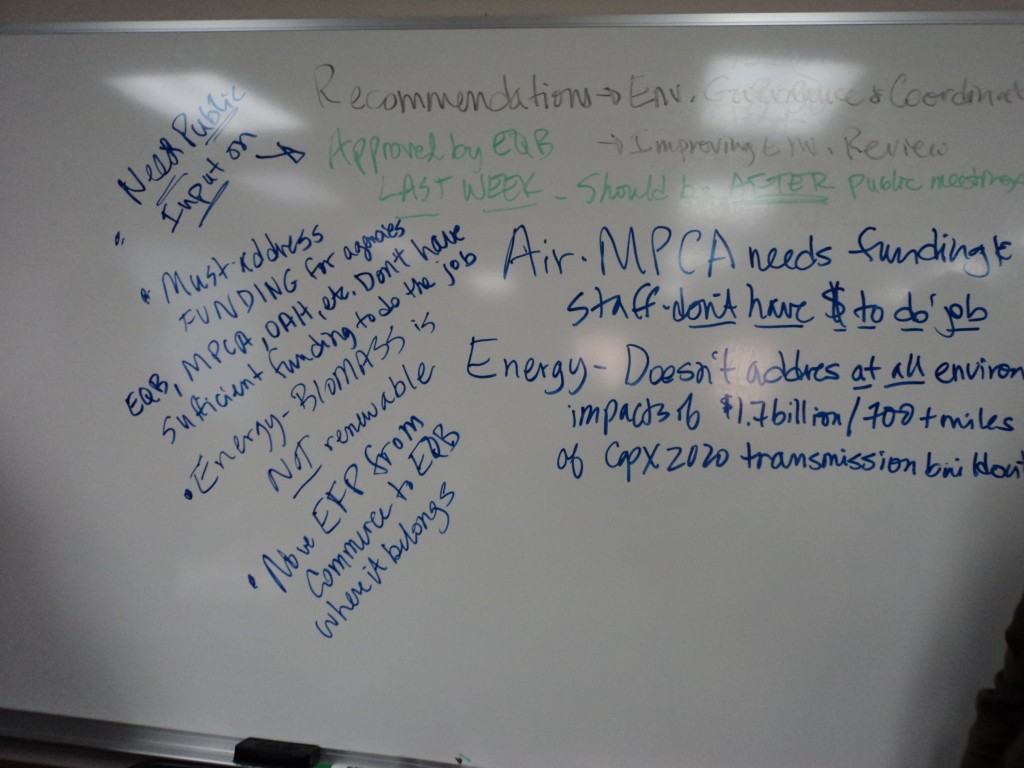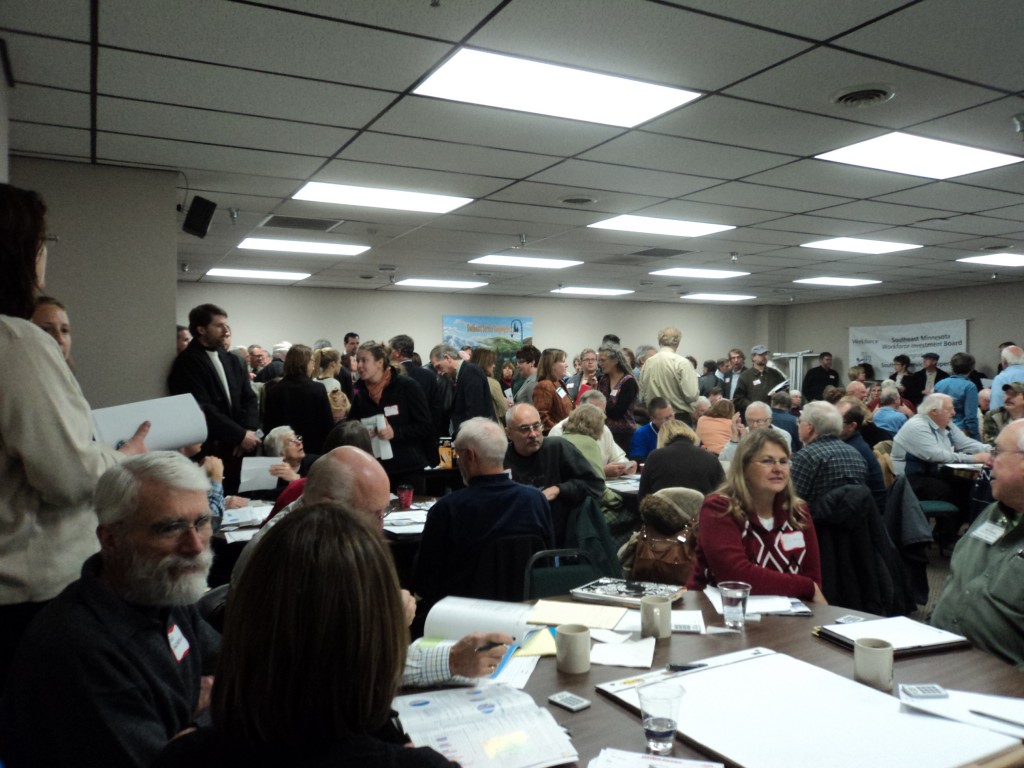EQB “Streamlining” Comments Due!
January 14th, 2013
This “streamlining” of environmental review marches onward.
COMMENTS ARE DUE TOMORROW!
I’d guess that the Gov. got an earful of what the people thought of his idea to … well… to… see E.O. 11-32, with an apparent intent to gut, slice and dice – the people don’t like it one bit:
Meetings were held, comments were given, but the only thing presented to comment on, and about which comments were directed, was the “Environmental Report Card.” But there also was a report about “Improving Environmental Review” and “Environmental Coordination and Governance.” Not one word was said by the meeting facilitators about these two reports, reports that were “approved” by the EQB before these meetings were even held! Great, just great.
Here were a few of my comments at the time, which I’ll be sending in, in technicolor:

Links to the EQB Environmental Review documents:
- Evaluation and Recommendations for Improving Environmental Review
- Recommendations for Environmental Governance and Coordination
- Minnesota Environment and Energy Report Card
At the meeting, I’d asked when comments were due, and the response, after they all looked at each other, was “anytime before the Environmental Congress (sometime in March, still no date disclosed).
Now, I hear there’s a deadline of January 15. It’s not on the EQB calendar, and it’s buried on the “Environmental Congress” page. Here is that deadline and also a form to make online comments:
Click HERE for the EQB’s “Resource” page.
Note there’s a “Calendar” on the Resource Page, above Click on that CALENDAR and note that there is no mention of any deadline for comments.
Please read the two reports with something of substance (the report card is “fluff” at best):
- Evaluation and Recommendations for Improving Environmental Review
- Recommendations for Environmental Governance and Coordination
What’s most important about these is that they’ve backed off from some of the language of the draft reports, the “eliminate regulation” mantra is not so frenetic. The charge for these reports was:
1. Evaluate and make recommendations on how to improve environmental review
2. Evaluate and make recommendations for improved environmental governance and
coordination
This is the part I find disturbing — tell me, how does this relate to the charge:
The elements of the evaluation directed by EQB included:
- Look at the original intent of environmental review and consider if circumstances in Minnesota have changed such that a fundamental change in the original intent is needed.
It also claims that:
The intent of this draft report is to provide a transparent depiction of the process
that was used to develop recommendations and allow for broad public review of the
recommendations.
Where’s the “broad public review” of this report? There is NONE! It’s up to us, folks, to go over this and review it and comment on it, because so far, “broad public review” hasn’t been happening.
The part that is most disturbing to me is the way they’re trying to reframe “intent.” I don’t know where this came from, E.O. 11-32 says not one word about “intent” of environmental review — that’s a legislative mandate from decades ago. Who wrote this? Was it our good friend Charlie Peterson who wrote it, the one who facilitated these meetings, the one who facilitated the CapX 2020 Task Forces so abysmally, going far afield of the charge? Where does the writer of this report get any direction or authority to rewrite legislation, legislative history, and redefine the intent of environmental review?
Here’s what’s in the “final” report, p. 5-6, approved by the EQB on November 14, 2012:
What’s wrong with that? Take a closer look. The problem is the part about “consideration of both short and long term social and economic needs of the state.” Environmental review is to look at impacts, to provide information, and it is not about “consideration of both short and long term social and economic needs of the state.” Environmental review has never done a thorough cost/benefit analysis. Social and economic impacts are supposed to be addressed in environmental review, but “NEEDS” — let’s talk about what the social “needs” of the state are, and let’s talk about what the economic “needs” of the state are. Who decides what a social or economic “need” is, and what weight to give it? If this report is any indication, we’re in trouble. Look in Appendix D at the weights given to the groups, and you’ll see that in the identical categories, when asked to pick the most important issues, some groups get more votes than others. Whose opinion counts more? Look at their Appendix D to see.
Send in your comments on the studies, let them know you’re commenting on the studies and then tell them what you have to say, and note that something this important does indeed require a “broad public review.” At least, that’s this broad’s opinion!

Leave a Reply